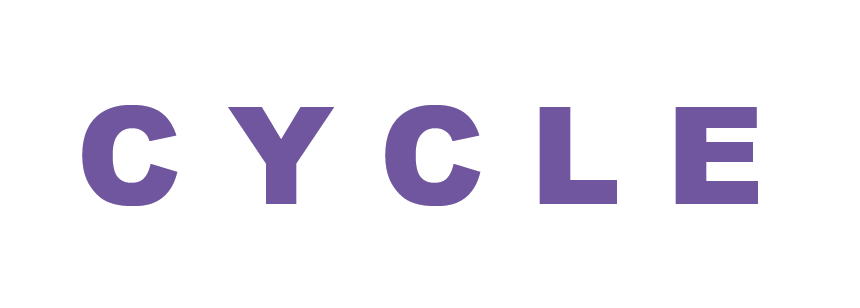Marguerite Humeau
FOXP2
2016
Digital Image
Image Credit Le Studio Humain (Benjamin Penaguin) for Marguerite Humeau
Marguerite Humeau
FOXP2
2016
Salurinn
That Time | Þá
27 October - 18 December 2016 | 27. október - 18. desember 2016
How is it possible that with only 2% difference between humans and chimpanzees, there is a huge difference in the way we evolved? According to a hypothesis posited by Jared Diamond in The Third Chimpanzee, this difference is an effect of the mutation of a gene called FOXP2, responsible for the evolution of the vocal tract. Humeau has been speculating with linguists around the world in order to reenact the tilting point when a single chance mutation in a gene generated a drastic change in structure of the larynx—allowing our ancestors to produce the first forms of an articulated language. In her work, a synthetic one-million-year-old voice reenacts the origin of language. It joins a celestial chorus composed of all humans who have lived on planet Earth since the first human tribes 100.000 years ago: 108 billion Homo Sapiens voices. Using reverse engineering processes, a speculative proto-language was created in collaboration with Pierre Lanchantin from the Laboratory of Voice Synthesis at the University of Cambridge. Humeau’s synthetic choir sings in a loop, evolving and vanishing, and in sudden bursts of lucidity re-awakes to evolve again.
Verk frönsku listakonunnar Marguerite Humeau FOXP2 (2016) verður sýnt í Salnum í Kópavogi í kjölfar fyrstu sýningar þess í Palais de Tokyo í París fyrr á árinu. Hvernig er það mögulegt að með aðeins 2% muni manns og simpansa geti þróun tegundanna verið svo ólík? Samkvæmt kenningu sem Jared Diamond setti fram í The Third Chimpanzee liggur munurinn í stökkbreyttu geni sem heitir FOXP2, sem stýrir þróun raddvegs. Humeau hefur með hjálp málfræðinga víðsvegar um heiminn rannsakað þetta, til þess að finna andartakið þar sem ein stök breyting í geni gerði það að verkum að barkakýlið tók stórum breytingum í uppbyggingu - sem gerði forfeðrum okkar kleyft að tala fyrsta mótaða tungumálið. Í verki hennar er milljóna ára gömul gervirödd sem tjáir upprunamálið. Hún sameinast himnakóri sem samanstendur af öllum röddum jarðar sem hafa verið uppi síðan fyrstu mannverur litu dagsins ljós fyrir 100.000 árum síðan: 108 milljarðar raddir Homo Sapiens. Með því að nota afturvirka verkfræði var frumgerð tungumáls áætluð í samvinnu við Pierre Lanchantin frá Laboratory of Voice Synthesis at the University of Cambridge. Sem manneskjur höfum við aðeins einn útgangspunkt sem erum við sjálf; gervikór Humeau´s syngur endurtekið, þróast og hverfur, og í skyndilegum skýrleika springur og vaknar aftur til að þróast frekar.
Marguerite Humeau’s work stages the crossing of great distances in time and space, transitions between animal and mineral, and encounters between personal desires and natural forces. The work explores the possibility of communication between worlds and the means by which knowledge is generated in the absence of evidence or through the impossibility of reaching the object of investigation. Marguerite Humeau weaves factual events into speculative narratives, therefore enabling unknown, invisible, or extinct forms of life to erupt in grandiose splendour. Combining prehistory, occult biology and science fiction in a disconcerting spectacle, the works resuscitate the past, conflate subterranean and subcutaneous, all the while updating the quest genre for the information age. Marguerite Humeau studied at the Design Academy Eindhoven and at the Royal College of Art, London, where she obtained her MA in Design Interactions in 2011. Her work has been shown in various solo and group exhibitions in galleries and museums including Palais de Tokyo, Paris (2016), Manifesta11, Zürich (2016), TBA21 Thyssen-Bornemisza Art Contemporary, Vienna (2015), the Serpentine Gallery, London (2015), the Museum of Modern Art, New York (2015), and the Hayward Gallery, Touring Programme (2015). Her work is part of the permanent collection of the Museum of Modern Art, New York and of the Fonds de Dotation famille Moulin (Lafayette Collection), Paris. Her work has been recognised internationally through various talks, awards and publications, such as Mousse, Blau, Metropolis M, The New York Times, Elephant Magazine, Kaleidoscope, Monopol, TAR magazine, I-D, Berlin Art Link, Artnet, Sleek Magazine, NPR, France Culture, Libération, and Le Monde.
Marguerite Humeau lærði við The Design Academy Eindhoven og við The Royal College of Art, London, þar sem hún útskrifaðist með MA gráðu í Design Interactions árið 2011. Verk hennar hafa verið sýnd í fjölmörgum einka- og samsýningum í galleríum og söfnum á borð við Palais de Tokyo (París), Manifesta11 (Zürich), TBA21 Thyssen-Bornemisza Art Contemporary (Vínarborg), Serpentine Gallery (London), Museum of Modern Art (New York) og Hayward Gallery (Touring Programme). Verk hennar eru hluti safneignar Museum of Modern Art, New York og Fonds de Dotation famille Moulin (Lafayette Collection) í París. Verk hennar hafa hlotið alþjóðlega viðurkenningu og eftirtekt með ýmsum málstofum, verðlaunum og útgáfum. Má þar nefna Mousse, Blau, Metropolis M, The New York Times, Elephant Magazine, Kaleidoscope, Monopol, TAR magazine, I-D, Berlin Art Link, Artnet, Sleek Magazine, NPR, France Culture, Libération og Le Monde. Í verkum sínum sviðsetur Marguerite ferðalag um víðáttur tíma og rúms, umbreytingu í heimi náttúrunnar og stefnumót löngunar mannsins við öfl náttúrunnar. Verkið skoðar möguleika á samskiptum milli heimanna og hvernig megi miðla þekkingu áfram þegar viðfang skoðunar er ósnertanlegt eða ekki til staðar. Marguerite Humeau vefur atburðum og staðreyndum saman við óræða og ímyndaða frásögn og leyfir þannig óþekktum, ósýnilegum eða útdauðum formum lífsins að brjótast fram í stórfenglegu sjónarspili. Með því að tengja saman forsögulegan tíma, dulspekilega líffræði og vísindaskáldskap á óþægilegan, sjónrænan hátt endurvekja verkin fortíðina, það sem er undirliggjandi, á sama tíma og þau endurmóta leit tegundarinnar á upplýsingaöld.
Website | Vefsvæði:
www.margueritehumeau.com

